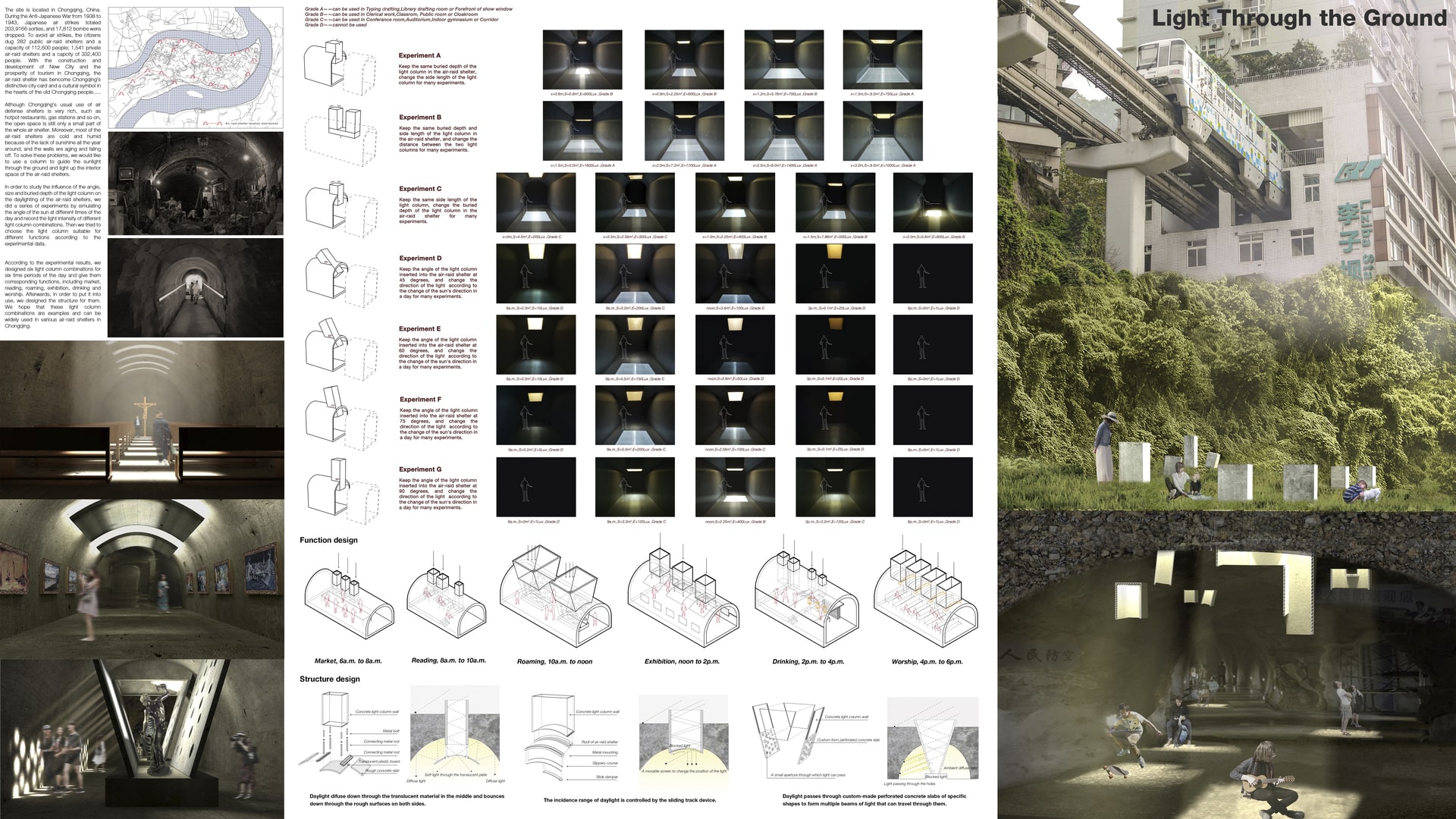Project Description
1.Site introductiaon and design background Located in the southwest of China, Chongqing is known as a mountain city. However, during the War of Resistance against Japan from 1938 to 1943, Japanese air strikes totaled 203,9166 sorties, and 17,812 bombs were dropped in Chongqing. To avoid air strikes, the citizens dug 282 public air-raid shelters and a capacity of 112,600 people; 1,541 private air-raid shelters and a capacity of 332,400 people. With the construction and development of urban renewal and prosperity of tourism in Chongqing, people still have not forgotten these hidden spaces under the city. Although Chongqing’s usual use of air defense shelters is very rich, such as hotpot restaurants, gas stations and so on, the open space is still only a small part of the whole air shelter. Moreover, most of the air-raid shelters are cold and humid because of the lack of sunshine all the year around, and the walls are aging and falling off. The air-raid shelter carries the history and memory of Chongqing City. It is a bright name card of Chongqing, more is the spiritual ballast of Chongqing citizens. 2. Introduction and experiment of light column To solve these problems, we started thinking about how to bring daylight into the shelters and give them more meanings and functions. First of all, we studied the soil covering and form classification of the air-raid shelters in Chongqing. Then we compared light wells, light pipes, light columns and other different ways of guiding the daylight. Finally, due to the advantages of light columns, such as good lighting effects, low cost and easy operation, we chose the light columns as the lighting form. After that, we designed a series of 1:75 model experiments for the light column, including light column combinations of different sizes, angles and burial depths and then recorded their illumination, illumination area and uniformity respectively. Finally, we give them four levels from A to D, and select the parameters that can be used in the actual lighting design. 3. Function, Structure and Usage guide According to the experimental results, we designed six light column combinations for six time periods of the day and give them corresponding functions, including market, reading, roaming, exhibition, drinking and worship. They contain different scenarios of use from morning to night. In addition to life and entertainment, we would like them to be spiritual places such as prayer rooms, where the special meanings of air-raid shelters are sensed through the daylight. Afterwards, in order to put it into use, we designed the structure for them. These include the use of different types of opaque or translucent materials to diffuse and reflect light, thus creating different forms of use. In addition, the specific form of light columns and the internal space form of the air-raid shelter's arch is also taken into account. At last, we hope that these light columns combination designs can become a systemic usage guide for the whole air-raid shelters in Chongqing. And the daylight will also be able to reach this deep corner of the earth and bring it to everyone's life through our design.
